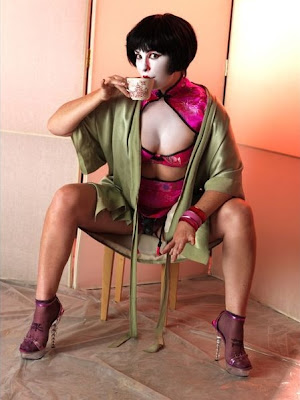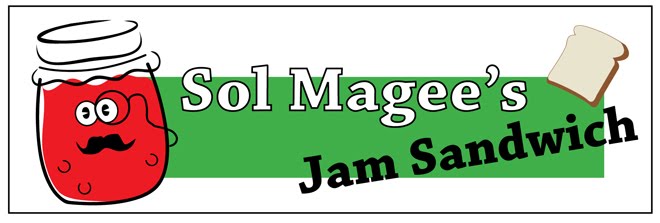
Peering through the butterfly framed window, a sex swing hangs nonchalantly.
Samurai swords hang from meat hooks overhead; the sex swing is all leather and chains.
These props are playfully at odds with their womb-like surroundings.
A warm pinkish hue lights the set, familiar symbols of suburbia and childhood, the white-picket fence and the Wendy house, frame the scene while a girl-on-girl porno flickers in the corner of your eye.
The set is full of aesthetic conflicts and playing with established societal myths is a trait that permeates the piece performed in this space.
This year, the inconspicuous Crane Lane in Temple Bar hosts one the Fringe’s most intriguing acts, as Aideen McDonald debuts her show Madame Butterfly.
The set is a site of contradictions in many ways.
McDonald says, “It is the womb of the show. It glows and pulsates. It’s like a crazy little nursery that sprang out of a Japanese jack-in-the-box. As a whole it has the feel of a magical, heightened, in every sense of the word, playpen.”
Yet at the same time, the set is a highly sexualised environment.
“The set is both a contemporary red light district window in full, if slightly skewed, swing and a take on an imagined, contemporary Geisha’s private salon,” she says.
To the fore, Madame Butterfly, as a prostitute in the window, has two personas (the flyers for the show advertise them separately), the virgin and the whore.
For all intents and purposes they are very similar to the eye, they both wear dildos, or dongs, to the initiated, one only slightly less intimidating than the other.
“The penis is a power symbol. The dongs speak to issues of gender construction and power relations,” McDonald elaborates.
It is in the background, the private salon space that Madame Butterfly invites you, on a one-on-one basis, to engage in a performance that will stimulate your ‘visual, oral and aural’ senses.
Men, if you’re thinking “I’d like to be stimulated visually, orally and aurally”, don’t get too excited: there is a catch — these tickets are for women only.
McDonald, who also works in the applied arts field, defends the move as she considers “working with single identity groups, in this case women, to be a productive means of addressing societal issues with a clear focus.”
‘Women only’ is also a comment on the context of the show.
“The less transparent establishments on this lane, the Boilerhouse sauna and the Emporium lapdancing club have been set up for the sensual enjoyed of men.”
Madame Butterfly only services women, engaging her female clients with a view to provoking self-analysis around issues of identity and intimacy.
“The process offers up a little sensual enjoyment for good measure”, McDonald assures.
She also adds, “I want to engage with women from across a broad section of society who work with or live with, issues directly affecting women. My hope is that the experience will be thought provoking through arousing all the senses.”
The show aims to raise questions. How do we feel about ourselves? What is our role in society? To what extent do we create our identity? What of femaleness? What of maleness?
But McDonald acknowledges, “Just as there are no new themes, there are no new questions. I don’t have the answers, only an active interest in the issues. These are questions I believe it is important for women to be asking themselves and each other.”
Pedestrian voyeurs will encounter and undoubtedly be engaged by the red light district act, the virgin and the whore in the window, “with a twist”.
Admittance is limited so individual “guests” willing to remove their shoes, enter the scene and enjoy Geishaesque acts of hospitality must book a ticket quickly.
Only the brave, the lucky and the fairer of the sexes will get to experience the full Madame Butterfly experience.
* Published in Issue 11 of Oh! Fringe, September 2009











